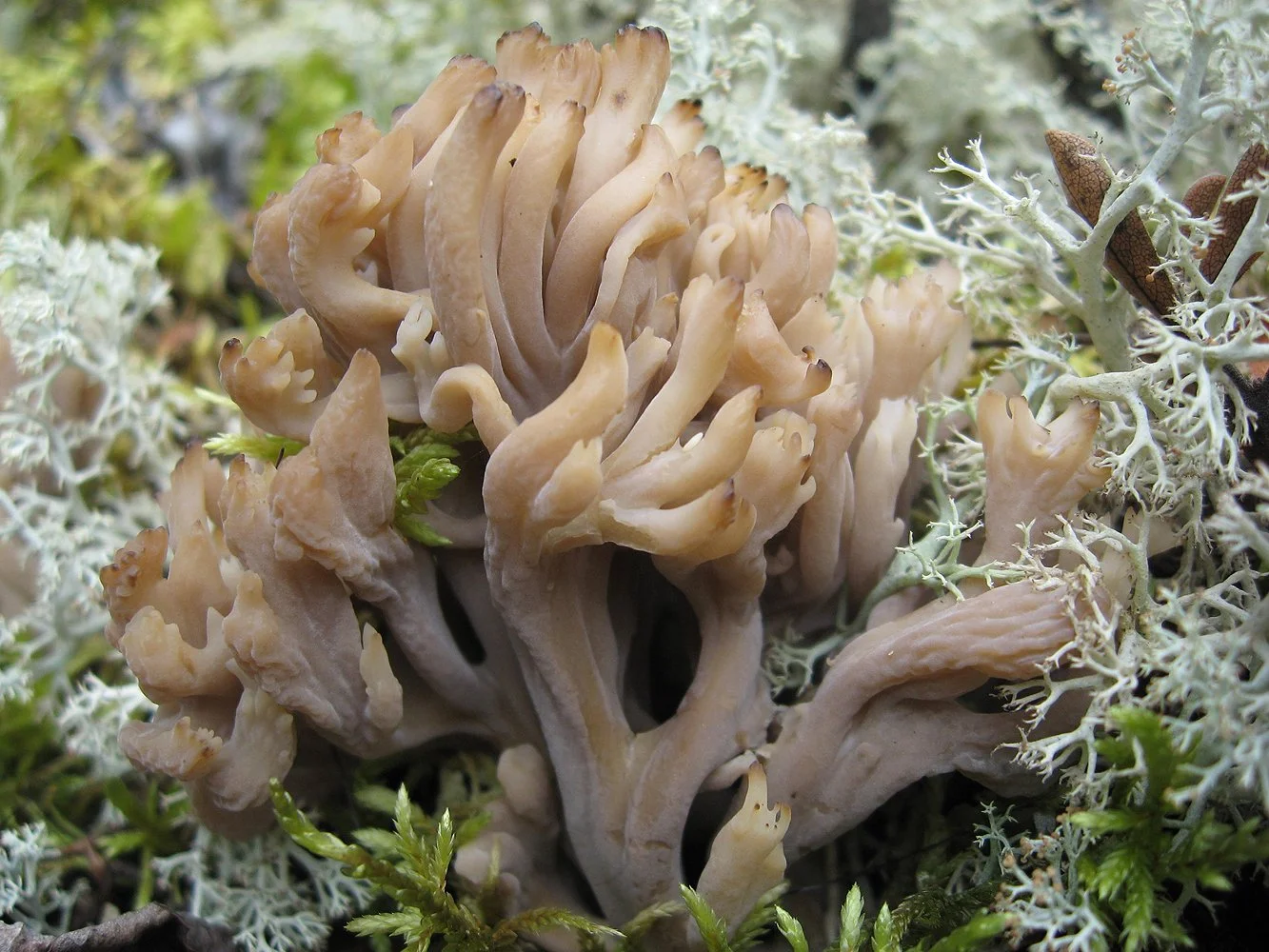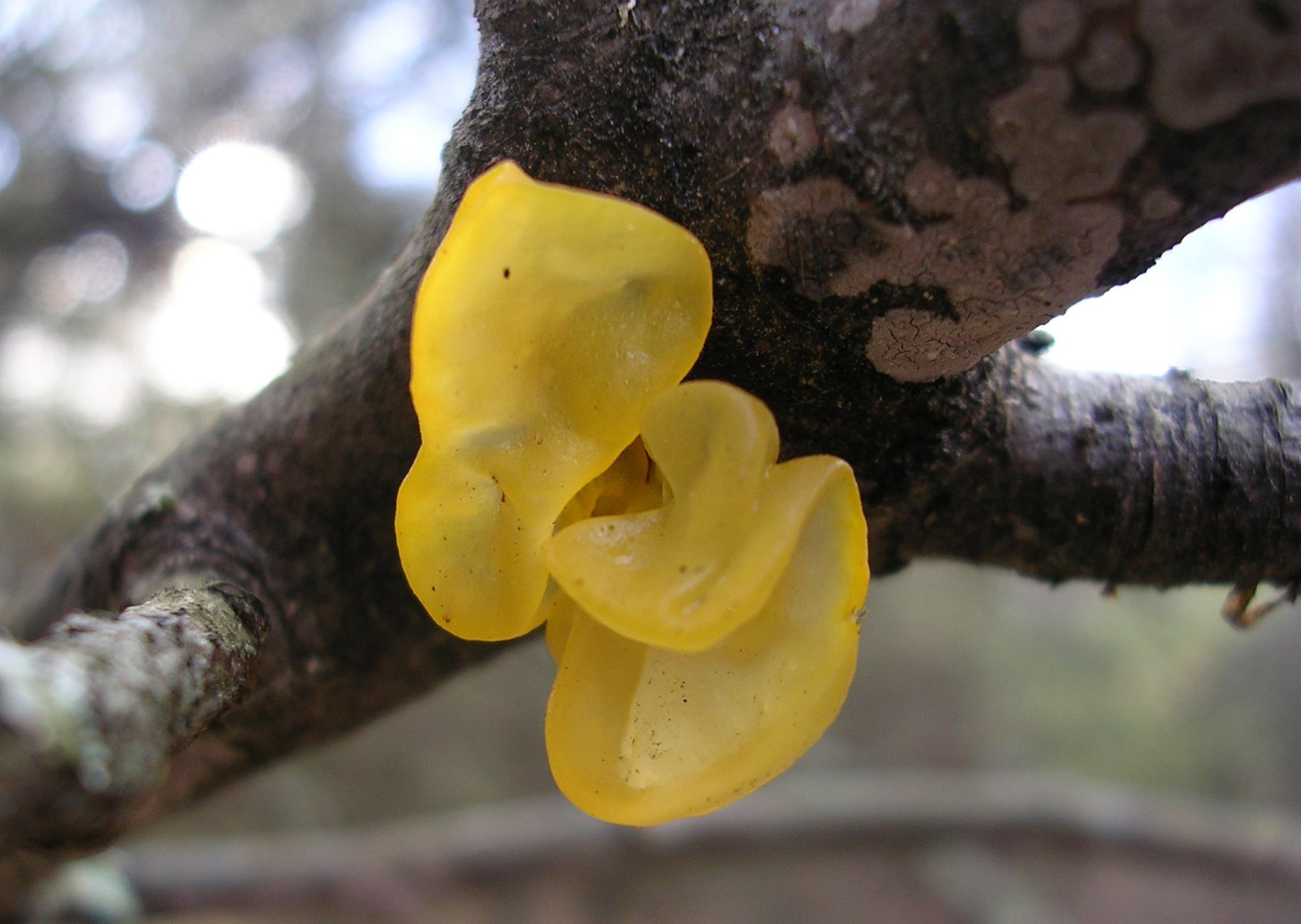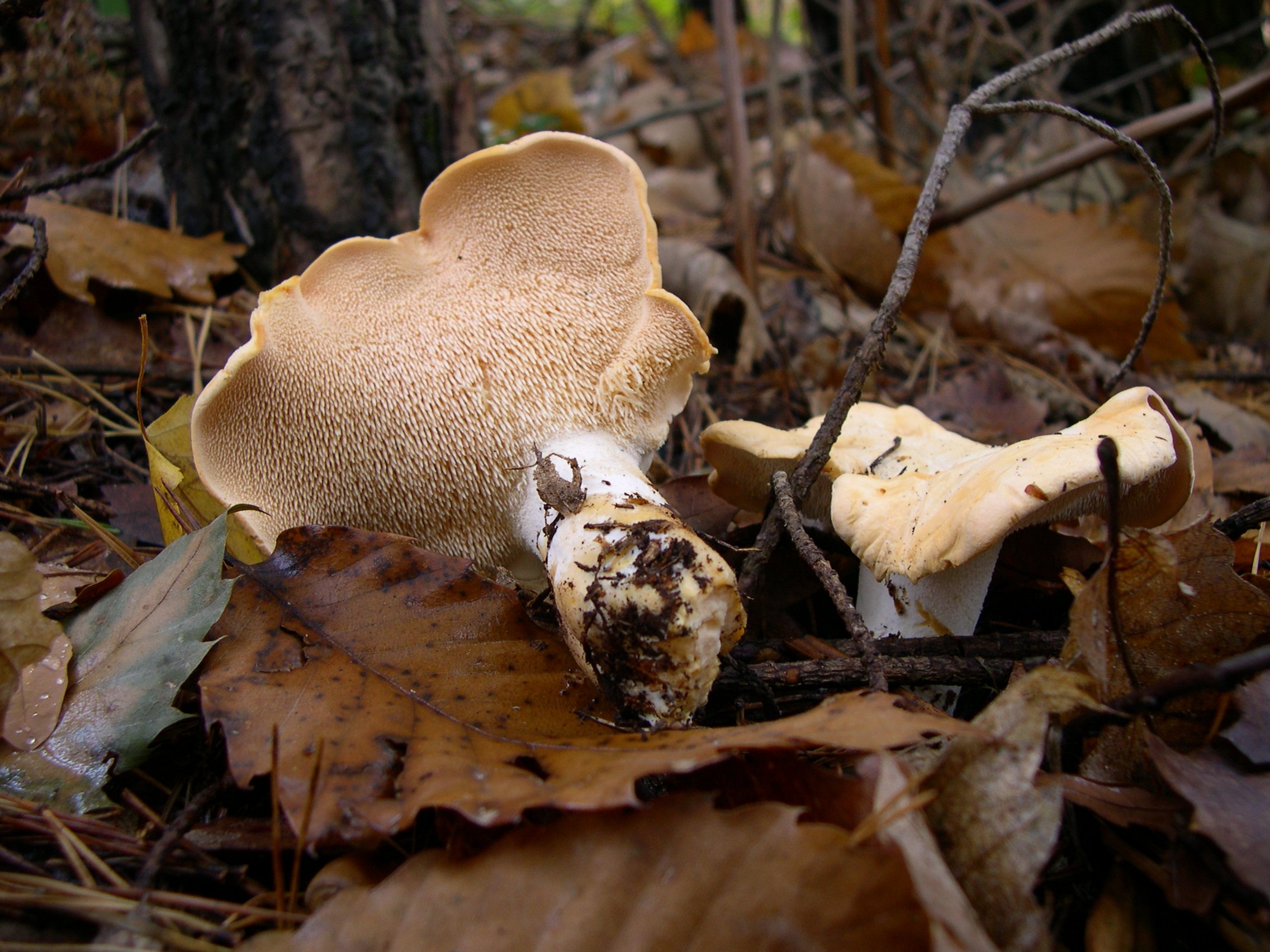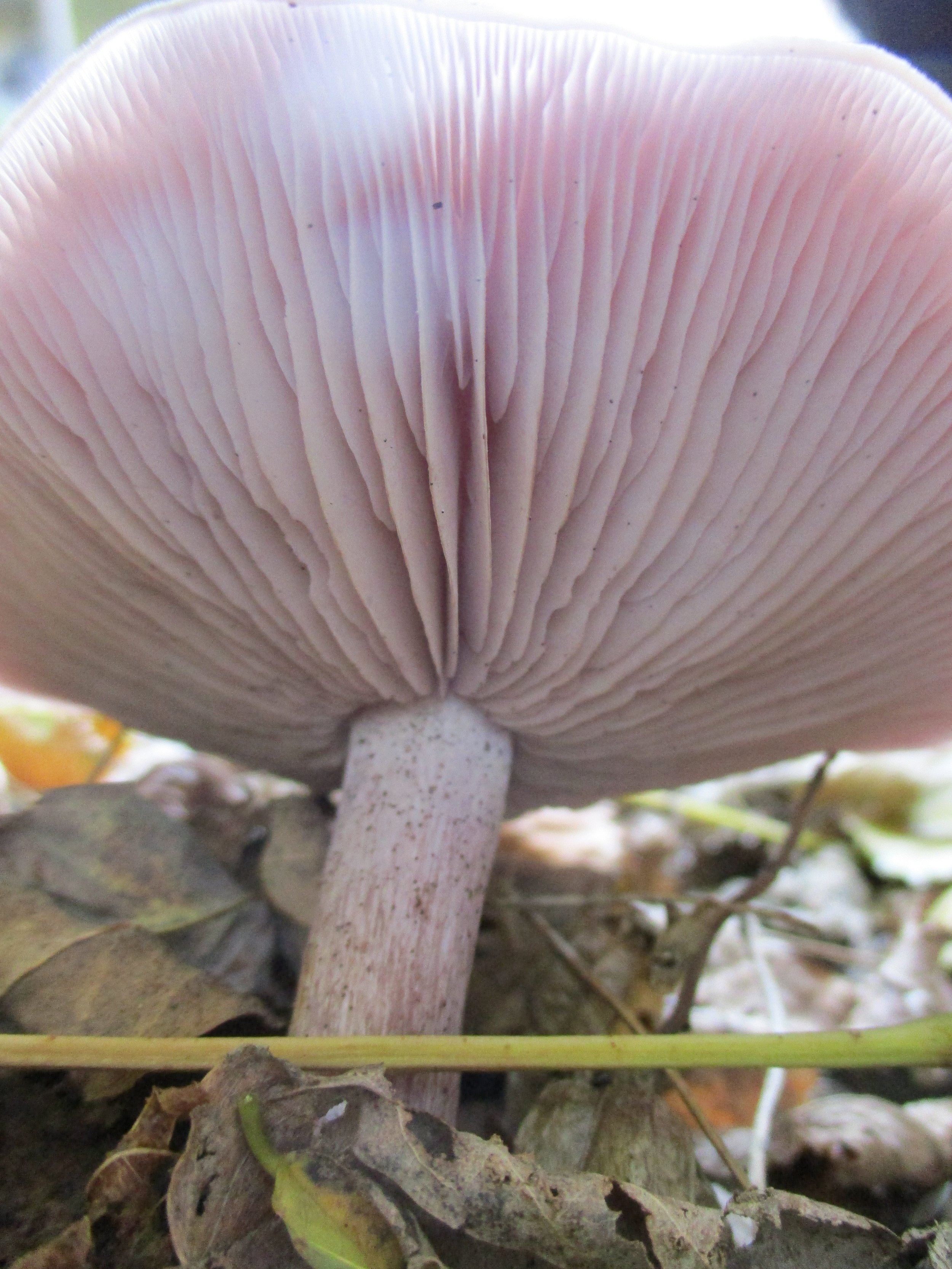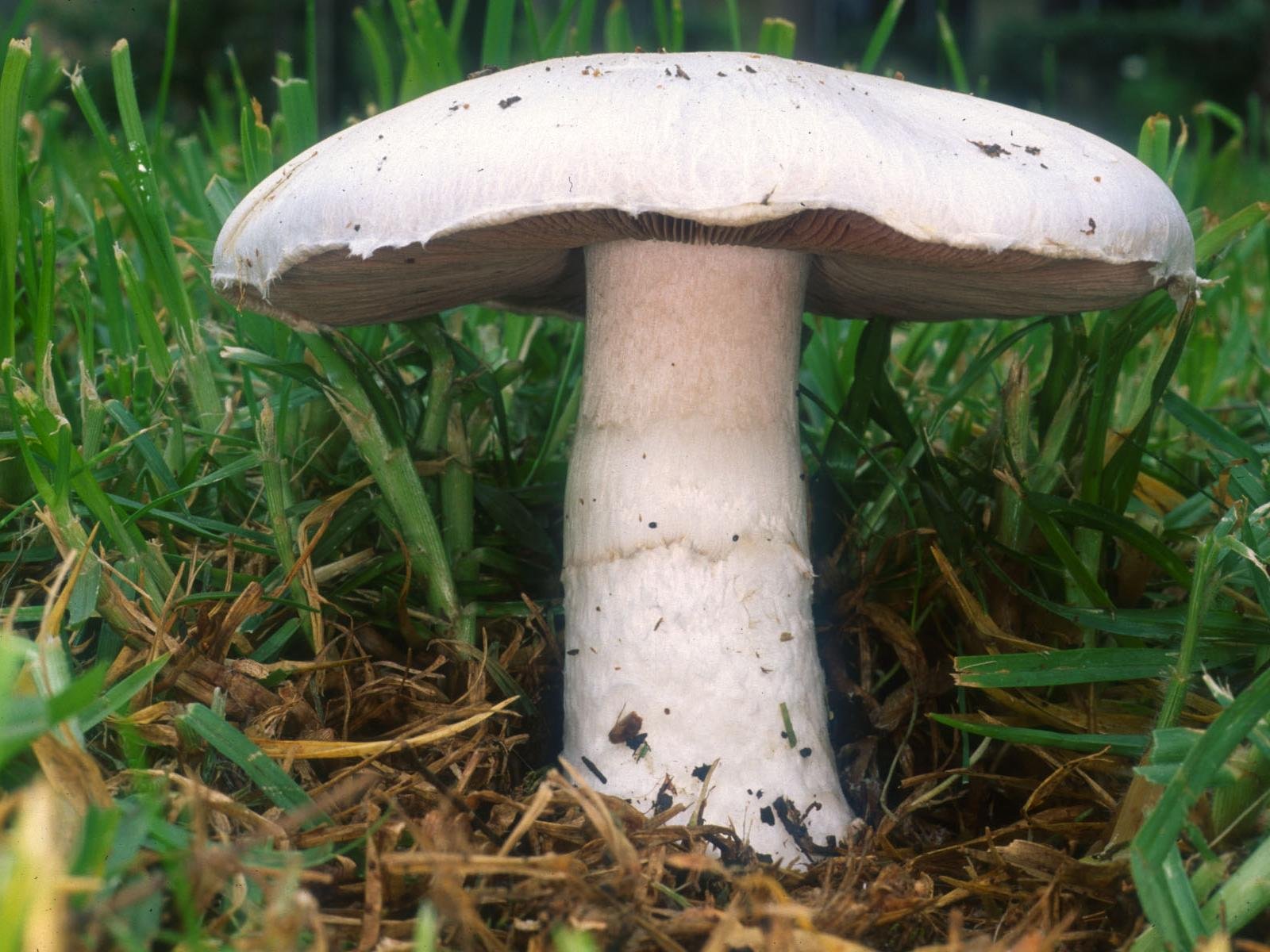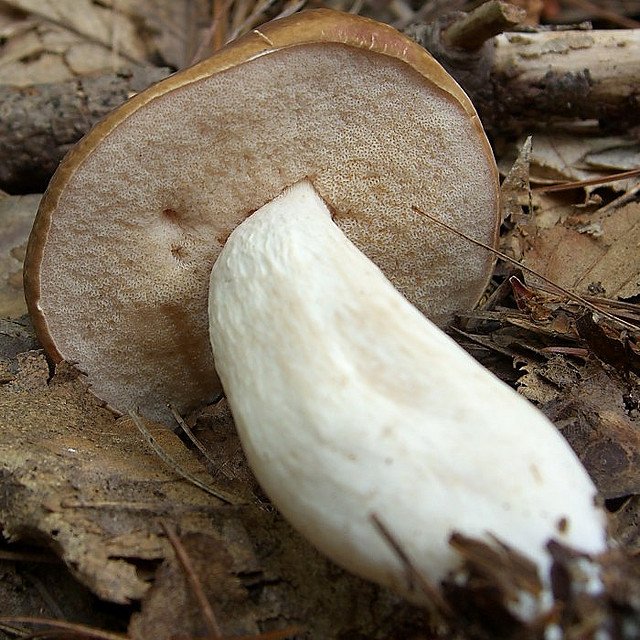A General Overview of Mushroom Morphology
Intro
Mushrooms can be divided into several different groups based on their distinct morphologies. In this article, we will discuss the physical characteristics of mushrooms that are categorized as coral fungi, jelly fungi, cup fungi, polypores or shelf fungi, tooth fungi, gilled mushrooms, and boletes. It’s important to note that these groups have been established mainly to refer to physical appearance; species that fall within the same category may or may not be evolutionarily related.
Coral Fungi
Coral fungi is the common name for clavarioid fungi, due to the erect, branching shape of their fruiting bodies, which resembles the coral you’d find on an underwater reef.
In the Pacific Northwest, specifically on the ground in conifer forests during the fall, you can forage the edible crested coral (known both as Clavulina cristata or Clavulina coralloides), which has a mild taste.
Jelly Fungi
Jelly fungi is a common name that is also derived from an obvious description of appearance: the mushrooms in this paraphyletic group appear to have a jelly-like consistency, with fruiting bodies that are gelatinous and translucent.
They can be shapeless, or form into cups, spikes, and coral-like structures. Most often, these mushrooms grow on logs and stumps. More than two dozen different species of jelly fungi can be found in the Pacific Northwest, like witch’s butter (Tremella mesenterica), which is edible,
and crystal brain (Myxarium nucleatum) which is not.
Cup Fungi
The mushrooms in the family Pezizaceae are commonly known as cup fungi because the fruiting bodies of these mushrooms tend to grow in a cup- or saucer-like shape.
This type of fruiting body is known as an apothecium. Several species of cup mushrooms can be found in the Pacific Northwest, like the peculiar-looking orange peel fungus (Aleuria aurantia).
Polypores, or Shelf Fungi
Polypores are a morphological group of mushrooms that are commonly found on trees or logs. They are named for the many spore-producing pores that are found on the underside of their fruiting bodies (this surface is called the hymenium).
More than 1000 species of polypores have been identified, but there are likely many more species yet to be classified. Polypores are also referred to as shelf or bracket fungi because their fruiting bodies form in shelf-like growths, typically attached to living trees or fallen logs. Mushrooms in this group have rough, rigid structures. A common species that can be foraged in North American forests is Trametes versicolor, also known as the turkey tail mushroom.
Tooth Fungi
Hydnoid fungi, also known as tooth fungi, are mushrooms that have spiny or tooth-like projections from which they release their spores.
The teeth of these mushrooms are tapered and oriented perpendicularly to the ground, so that released spores have a better chance of falling straight down and proliferating. In the Pacific Northwest, an edible mushroom known as either bear’s head, or the western coral hedgehog (Hericium americanum) can be foraged after the start of fall.
Gilled mushrooms
Gilled mushrooms are fairly easy to identify, because of the distinctive gills that appear on the undersides of the mushroom cap.
Instead of polypores, which produce spores from their one flat surface on the underside, these gills provide a much greater surface area from which to produce spores. Gilled mushrooms have a stem and a cap and look like a stereotypical mushroom.
A classic gilled mushroom that can be foraged in the Pacific Northwest is the Pacific golden chanterelle (Cantharellus formosus), a mushroom with an earthy, woody flavor.
Boletes
Boletes are a group of mushrooms that have caps, and can look very similar to gilled mushrooms, but instead of gills on the underside of the cap, they have tubes. The tubes are packed densely together, so much so that instead of seeing tube-like structures, the underside of the cap looks porous and sponge-like.
In addition to a stem, cap, and tube-like underside, they may or may not have veils.
The king bolete (Boletus edulis) is an edible mushroom that can be found in the Pacific Northwest and has a nutty flavor.
References
Michael Kuo. “Clubs and Corals.” MushroomExpert.com. https://www.mushroomexpert.com/clubscorals.html
Dentinger, B. T. M.; McLaughlin, D. J. (2006). "Reconstructing the Clavariaceae using nuclear large subunit rDNA sequences and a new genus segregated from Clavaria". Mycologia. 98 (5): 746–762. doi:10.3852/mycologia.98.5.746.
“Jelly Fungi.” Intermountain Herbarium. Utah State University. https://www.usu.edu/herbarium/education/fun-facts-about-fungi/jelly-fungi
“Jelly Fungi.” New Brunswick Museum. http://website.nbm-mnb.ca/mycologywebpages/NaturalHistoryOfFungi/JellyFungi.html
“The cup fungi – and relatives.” Australian National Herbarium. https://www.anbg.gov.au/fungi/two-cup.html
“Cup fungi.” Mountain Lake Biological Station. https://mlbs.virginia.edu/organism/cup_fungi
“Cup Fungi (Pezizales) of the Pacific Northwest.” iNaturalist. https://www.inaturalist.org/guides/11202
“Shelf Fungi.” Utah State University Department of Biology. https://www.usu.edu/herbarium/education/fun-facts-about-fungi/shelf-fungi
“Mushroom Morphology: Polypores.” Fungus Fact Friday. https://www.fungusfactfriday.com/030-polypores/
“Tooth Fungi.” New Brunswick Museum. http://website.nbm-mnb.ca/mycologywebpages/NaturalHistoryOfFungi/ToothFungi.html
Michel Kuo. “The Boletes.” MushroomExpert.com. https://www.mushroomexpert.com/boletes.html
Michael Kuo. “The Gilled Mushrooms.” MushroomExpert.com. https://www.mushroomexpert.com/gilled.html
Image Sources:
Image 1: https://en.wikipedia.org/wiki/Clavarioid_fungi#/media/File:Clavaria_zollingeri_90973.jpg
Attribution to Dan Molter
Image 2: https://en.wikipedia.org/wiki/Clavulina_cristata#/media/File:Clavulina_cristata_sasata.JPG
Attribution to Wikipedia user Sasata
Image 3: https://en.wikipedia.org/wiki/Tremella_fuciformis#/media/File:Tremella_fuciformis_337510.jpg
Attribution to Ron Pastorino
Image 4: https://en.wikipedia.org/wiki/Tremella_mesenterica#/media/File:Tremella_mesenterica_branch.JPG
Image 5: https://en.wikipedia.org/wiki/Myxarium_nucleatum#/media/File:Crystal_Brain_Fungus_(Exidia_nucleata)_-_geograph.org.uk_-_1000447.jpg - Attribution to Lairich Rig
Image 5.1: https://en.wikipedia.org/wiki/Pezizaceae#/media/File:Peziza_spec._-_Lindsey_1.jpg
Attribution to James Lindsey
Image 6: https://en.wikipedia.org/wiki/Aleuria_aurantia#/media/File:Aleuria_aurantia_1.jpg
Attribution to Wikipedia user Aiwok
Image 7: https://commons.wikimedia.org/wiki/File:Blushing_Bracket_%28Daedaleopsis_confragosa%29_pores_%2816502447572%29.jpg attribution to Martin Cooper Ipswich
Image 8: https://en.wikipedia.org/wiki/Trametes_versicolor#/media/File:Trametes_versicolor_G4_(1).JPG - attribution to Jerzy Opiola
Image 9: https://en.wikipedia.org/wiki/Hydnoid_fungi#/media/File:HydnumRepandum.JPG
Attribution to Wikipedia user Archenzo
Image 10: https://en.wikipedia.org/wiki/Hericium_abietis#/media/File:Hericium_abietis_109093.jpg
Attribution to Jason Hollinger
Image 11: https://en.wikipedia.org/wiki/Agaricales#/media/File:Plaatjezwam.jpg
Attribution to Wikipedia user Garnhami
Image 12: https://commons.wikimedia.org/wiki/File:Agaricus_campestris.jpg Attribution to Nathan Wilson
Image 13: https://en.wikipedia.org/wiki/Cantharellus_formosus#/media/File:Cantharellus_formosus_174975_Belfair.jpg Attribution to Wiki user caphillkid
Image 14: https://www.thesurvivalgardener.com/wp-content/uploads/2015/08/1012922522_9ccaba407e_z.jpg
Attribution to Jason Hollinger
Image 15: https://en.wikipedia.org/wiki/Suillus_luteus#/media/File:Suillus_luteus_113280.jpg
Attribution to Tim Sage
Image 16: https://en.wikipedia.org/wiki/Boletus_edulis#/media/File:Boletus_edulis_EtgHollande_041031_091.jpg Attribution to Wiki user Strobilomyces

